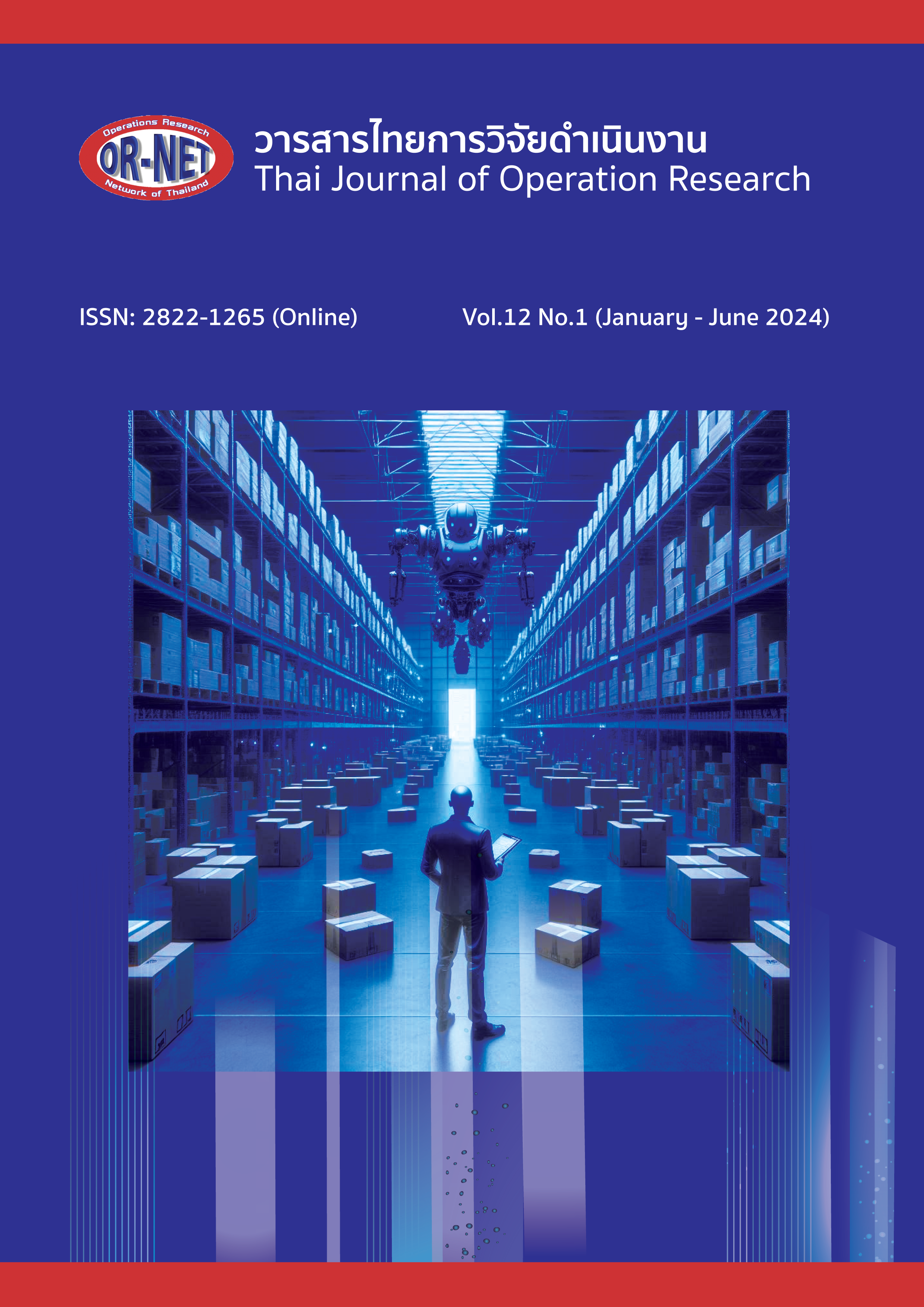Establish a policy for ordering multiple consumable products simultaneously
Keywords:
unstable demand, forecasting, order quantity, reorder point, Joint replenishment problemAbstract
Defining or planning product purchasing policies is very important because setting an appropriate purchasing policy can reduce the company's overall costs. which determines the product ordering policy who will plan or set the policy must know the details of the product and conditions for ordering products with the originating company or manufacturer Including all expenses that must occur in ordering products into the company and must know each product customer behavior to be used to predict future customer orders. This research aims to analyze and establish a policy for purchasing new supplies to be suitable for needs and have the lowest average annual total cost. However, an unstable demand for consumables or Liner bags has zero demand for many periods (Intermittent Demand and Lumpy Demand) cause it difficult for the company to manage inventory and reserve products to prevent product shortages. Therefore, it sets up a policy for ordering new supplies by forecasting demand that may occur in the future. In this research, 4 forecasting methods will be used 1. Forecasting by Croston's method 2. Forecasting by Syntetos and Boylan (SBA) estimation method 3. Forecasting by Shale Boylan and Johnston method (SBJ) 4. Forecasting by the method of Teunter Syntetos and Babai (TSB) and using the mean and standard deviation obtained from the forecasting method with the square root of the mean square error (RMSE) that lowest RMSE is used to calculate the order quantity, reorder point and safety stock to prevent shortages of each item that keeps the total annual cost to a minimum. By using the method of ordering many products at once (Joint Replenishment Problem) under the limitations of a container that can hold only 12 pallets and the ordering requirements that must order a full pallet per item.
References
X. Zhuan, Y. Yu and C. Aihui, " A combined forecasting method for intermittent demand using the automotive aftermarket data," Data Science and Management., vol. 5, no. 2, pp. 43-56, 2022.
นพพล คณากรยิ่งยง และ เจริญชัย โขมพัตราภรณ์, “การพยากรณ์ของอุปสงค์หลายรูปแบบและการสั่งซื้อแบบตู้คอนเทนเนอร์ที่เหมาะสม กรณีศึกษา อุปกรณ์ออกกาลังกายนำเข้า,” วารสารไทยการวิจัยดำเนินงาน., ปีที่ 5, ฉบับที่ 1, น. 1-11, 2560.
Y. Yang, C. Ding, S. Lee, L. Yu and F. Ma, "A modified Teunter-Syntetos-Babai method for intermittent demand forecasting," Journal of Management Science and Engineering., vol. 6, no. 1, pp. 56-63, 2021.
H. Rehman, "Forecasting-Using-R," [Online]. Available: https://github.com/hakeemrehman-/Forecasting-Using-R/commits/main/4.%-20Forecasting%20for%20intermittent%20demand.R. [Accessed 20 December 2022].
A. O. Solis, F. Longo, S. Mukhopadhyay, L. Nicoletti and V. Brasacchio, "Approximate and Exact Corrections of the Bias in Croston’s Method When Forecasting Lumpy Demand: Empirical Evaluation," in International Conference on Modeling and Applied Simulation, France, 2014.
Y. Hong, J. Zhou and M. A. Lanham, "Forecasting Intermittent Demand Patterns with Time Series and Machine Learning Methodologies," in Midwest Decision Sciences Institute Conference, United States, 2018.
ศศิภาส์ สีดาว และ เจริญชัย โขมพัตราภรณ์, “การพยากรณ์ความต้องการและการหาต้นทุนรวมที่ต่ำที่สุดของโครงข่ายบรรเทาทุกข์,” วารสารไทยการวิจัยดำเนินงาน., ปีที่ 8, ฉบับที่ 2, น. 27-41, 2563.
M. Doszyn, "Intermittent demand forecasting in the enterprise: empirical verification," Journal of Forecasting., vol. 38, no. 5, pp. 459-469, 2019.
T. Willemain, C. N. Smart and H. F. Schwarz, "A new approach to forecasting intermittent demand for service parts inventories," International Journal of Forecasting., vol. 20, no. 3, pp. 375–387, 2004.
L. Peng, L. Wang and S. Wang, "A review of the joint replenishment problem from 2006 to 2022," Management System Engineering., vol. 1, no. 9, pp. 1-11, 2022.
Downloads
Published
How to Cite
Issue
Section
License

This work is licensed under a Creative Commons Attribution-NonCommercial-NoDerivatives 4.0 International License.




